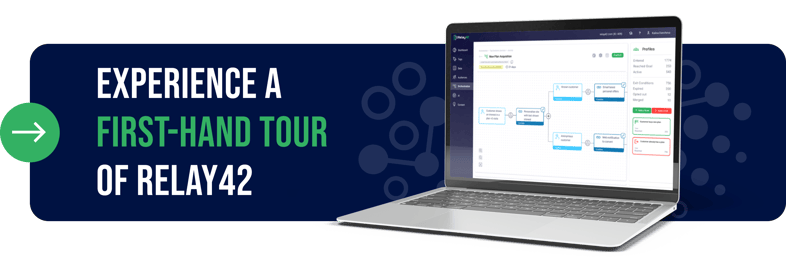How to Work With Zero, First, Second and Third-Party Data on a CDP
by Anthony Botibol on 2.5.2023

A Customer Data Platform (CDP) is a technology that companies invest in for the purpose of storing and unifying customer data, and to make it more usable across the business for sales, marketing, and customer service needs. Customer data comes in all shapes and sizes, and there are many different types of data you can hold about a customer.
Some of that data comes with 100% confidence that it can be used for marketing purposes, whereas the guidelines for using other data sets are less clear. Plus, with the continuous global movement towards tighter privacy regulations, it is important that marketers understand the different categorizations of data and how the data can be used in a compliant way.
For this article, we’re focussing on 4 categorizations of customer data that businesses usually have at their disposal:
- First-party data
- Zero-party data
- Third-party data
- Second-party data
Here we provide an explanation for what each category of data is and isn’t, as well as how these types of data interoperate with a Customer Data Platform.
Zero-party data
Zero-party data is a subset of first-party data but is mostly data that you entice out of your customers through a value exchange, and which can then also be used for more enhanced levels of personalized experiences.
A preference center can allow a customer to tell you how frequently they want to receive offers from you, through which channels, and also the types of messages they want from you. This data therefore enables you to respect their wishes and foster a better relationship than someone who feels you’re cluttering their email inbox or annoying them with ads they don’t want.
Surveys, polls, quizzes, two-way SMS conversations, progressive forms, and gamified experiences are just some of the ways that brands can solicit more information and data points about their customers, which can then be used to customize the style, tone and personalized experience that you provide to each customer.
Zero-party data is usually collected through a value exchange whereby you provide a positive experience in exchange for data about them, and with enough reach of zero-party data facts about your customers, it enables valuable insights and new ways to personalize your marketing to them.
First-party data
Firsy-party data is information that your company has collected about a customer whereby the customer has freely given the data to you, usually via a website form or through a purchase (online or offline). This can be personal data (e.g. name, address, phone number, email address,...), demographics data (age, gender,...), transactional data (purchases, returns,...), but also behavioral data (e.g. website pages visited, email clicks,…) where the customer or prospect must have consented for you to collect it.
When entering a website, a first-party cookie is a common way for a business to collect and store behavioral data about a customer, or via an explicit opt-in to receive marketing communications on a channel that will track some behaviors. First-party data is usually the most regulated of data that brands can use to personalize their marketing efforts, but more importantly is also one way that a business can differentiate itself from competitors.
Understanding gender, age, location, and previous behaviors and purchases, is all data that is unique to your company and therefore your ability to utilize that differentiated first-party data more effectively can be an enabler for growth. Using that data to create a more personalized experience for a customer (perhaps offering products they are most likely to want, or providing an experience tailored to their location or life stage) can lead to higher conversions and more loyal customers.
Second-party data
Second-party data is a subset of third-party data and is essentially another organization's first-party data, where two organizations agree on a contractual arrangement for the sharing of customer data to serve a specific purpose. A good example of this type of data co-op is seen between comparison websites and insurance or telco providers whereby the consumer agrees for their data to be passed to the insurer having found a suitable offer.
Or, in the example of an airline, they might create agreements with car rental providers, airports, and holiday companies to provide ancillary products that are relevant to their type of customers. Indeed many cell/mobile and internet providers enter into these agreements as well, to benefit to their joint customers or provide a differentiated offering.
Second-party data relationships can be very successful and usually agreed as a long-term strategy between two businesses who see common benefits, but also are tightly regulated before they can take place.
Third-party data
Third-party data is essentially data that you obtain via a third party. Whereas the regulations around the use of third-party data used to be vague and didn’t have stringent regulations around it, with the advent of the GDPR and other similar regulations across the world, the legal use of third-party data on consumers has greatly diminished.
The key change was the move towards a consumer needing to explicitly opt-in rather than opt out of marketing. Whereas marketers could previously purchase data about consumers to target them with marketing communications, that is no longer possible without an explicit opt-in from the consumer to do so.
While new data regulations created an overnight shift change for direct marketing (for example those brands that had to cut their email audiences where consent for email marketing wasn’t explicit), the digital ecosystem of using third-party cookies to target consumers online (who have not explicitly opted-in to do so) became a huge problem that was never truly solved.
Mapping explicit consent for digital advertising is inherently more difficult because the data is often collected and processed by multiple organizations, each with their own unique data processing practices and policies. This can make it difficult to determine which organizations have access to an individual's data and what they are using it for, making it challenging to obtain informed consent.
How can a Customer Data Platform support marketing teams to leverage customer data?
A Customer Data Platform is designed to ingest, store, and unify all forms of customer data whether zero, first, second or third-party, and create unified customer profiles from all the data.
The CDP helps with compliance and privacy when entering into second-party data partnerships and will ingest and retain data for only as long as you legally permit it to do so. It also enables the business to centrally manage the opt-ins and preferences from all your technologies and systems.
Therefore, to optimize your use of all data types a CDP can help to make sense of the data and monetize the data in a compliant way through more targeted marketing and improved customer experiences.
Interested to learn more about how CDPs can help your business? Reach our to our team.
You May Also Like
These Related Stories
.png)
How to Futureproof Your Marketing with Server-Side Data Management

CDPs vs. DMPs - What Are the Differences?


